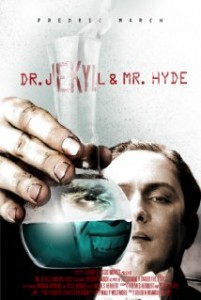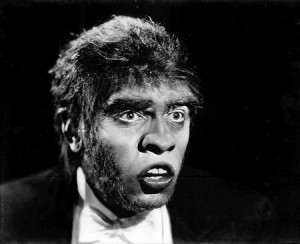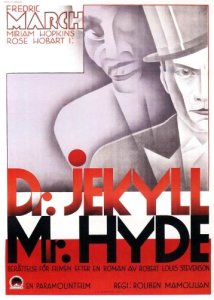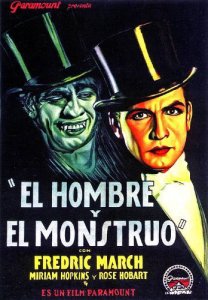Dr Jekyll and Mr Hyde ***** (1931, Fredric March, Miriam Hopkins, Rose Hobart) – Classic Movie Review 779
The 1931 Dr Jekyll and Mr Hyde is the first horror movie to win an Academy Award and the first film to be screened at the world’s first film festival.
Fredric March won the 1932 Best Actor Oscar for his devilish portrayal of sexual frustration in director Rouben Mamoulian’s stirring and creepy 1931 film version of the Robert Louis Stevenson classic novel The Strange Case of Dr Jekyll and Mr Hyde.
In the famous plot, the conflicted Dr Henry Jekyll believes we have both good and evil sides and that by separating them we can become liberated. He experiments with chemicals to accomplish this succeed and he allows his dark side to run wild when he drinks a potion that transforms him into the evil Mr Hyde, who commits a series of horrible crimes. By the time he decides to quit using his drug, alas it is all too late.
Piling up lots of tension and creepy moments, the movie steadily builds momentum and explodes in an exciting climax. Worthy of his Oscar, March is outstanding, quite remarkable in both roles, Miriam Hopkins is provocative and full of righteous self importance as the wronged cockney hooker Ivy, though Rose Hobart, playing Muriel Carew, makes for a dull fiancée for Jekyll.
March was transformed into a menacing apeman by making different sections of his makeup sensitive to a gradually exposed series of light filters under cinematographer Karl Struss’s cameras. His appearance is based on the Neanderthal man.
This 1931 Dr Jekyll and Mr Hyde is still arguably the best of the many screen adaptations of the famous story.
The film runs 97 minutes but a cut version of 82 minutes was released on the movie’s re-release.
Percy Heath and Samuel Hoffenstein’s adapted screenplay and Struss’s cinematography were also Oscar nominated.
It is the first film to be screened at the world’s first film festival, on 6 August 1932 in Venice. An Audience Referendum at the 1932 Venice Film Festival voted March most favourite actor and this the Most Original Story (Fantasy).
The characters of Muriel Carew and her father Brigadier-General Carew (Halliwell Hobbes) do not appear in Stevenson’s story but are based on similar characters created by playwright T R Sullivan for his 1887 stage adaptation. Ivy does not appear in the original story either.
Spencer Tracy’s 1941 MGM classic Dr Jekyll and Mr Hyde is based on this 1931 version.
Other versions include John Barrymore’s famous 1920 silent movie Dr Jekyll and Mr Hyde (there had already been half a dozen) and Spencer Tracy’s MGM classic Dr Jekyll and Mr Hyde in 1941, The Son of Dr Jekyll (1951), Abbott and Costello Meet Dr Jekyll and Mr Hyde (1953), The Daughter of Dr Jekyll (1957), The Two Faces of Dr Jekyll (1960), The Strange Case of Dr Jekyll and Mr Hyde (1968), Dr Jekyll and Sister Hyde (1971), I, Monster (1971), Jekyll & Hyde (1990), and Dr Jekyll and Ms Hyde (1995).
Stan Laurel spoofs John Barrymore’s 1920 performance in the 1925 two-reeler Dr Pyckle and Mr Pride.
The cast are Fredric March as Dr Henry Jekyll / Mr Edward Hyde, Miriam Hopkins as Ivy Pierson, Rose Hobart as Muriel Carew, Holmes Herbert as Dr John Lanyon, Halliwell Hobbes as Brigadier-General Danvers Carew, Edgar Norton as Poole, Tempe Pigott as Mrs. Hawkins, Arnold Lucy as Utterson, G L McDonnell as Carew’s butler Hobson, Eric Wilton as Lanyon’s butler Briggs, and Douglas Walton as blond student.
© Derek Winnert 2014 Classic Movie Review 779
Check out more reviews on http://derekwinnert.com/









